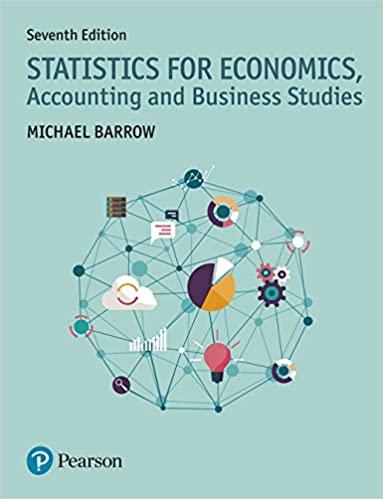Question
A customer has requested that Lewelling Corporation fill a special order for 2,500 units of product S47 for $30 a unit. While the product would
A customer has requested that Lewelling Corporation fill a special order for 2,500 units of product S47 for $30 a unit. While the product would be modified slightly for the special order, product S47's normal unit product cost is $21.40:
| Direct materials | $ | 6.10 | |
| Direct labor | 4.00 | ||
| Variable manufacturing overhead | 3.20 | ||
| Fixed manufacturing overhead | 8.10 | ||
| Unit product cost | $ | 21.40 | |
Assume that direct labor is a variable cost. The special order would have no effect on the company's total fixed manufacturing overhead costs. The customer would like modifications made to product S47 that would increase the variable costs by $1.70 per unit and that would require an investment of $15,000.00 in special molds that would have no salvage value. This special order would have no effect on the company's other sales. The company has ample spare capacity for producing the special order. The annual financial advantag
e (disadvantage) for the company as a result of accepting this special order should be:
Garrison 16e Rechecks 2017-12-15
Multiple Choice
-
($2,300)
-
$15,200
-
$22,500
-
($14,700)
Farrugia Corporation produces two intermediate products, A and B, from a common input. Intermediate product A can be further processed into Product X. Intermediate product B can be further processed into Product Y. The common input is purchased in batches that cost $43 each and the cost of processing a batch to produce intermediate products A and B is $17. Intermediate product A can be sold as is for $26 or processed further for $16 to make Product X that is sold for $39. Intermediate product B can be sold as is for $57 or processed further for $32 to make Product Y that is sold for $78.
Required:
a. Assuming that no other costs are involved in processing the common input or in selling products, what is the profit (loss) from processing one batch of the common input into the products X and Y?
b. What is the Financial advantage (disadvantage) from further processing? Should each of the intermediate products, A and B, be sold as is or processed further? (Negative amounts should be indicated by a minus sign.)
|
Step by Step Solution
There are 3 Steps involved in it
Step: 1

Get Instant Access to Expert-Tailored Solutions
See step-by-step solutions with expert insights and AI powered tools for academic success
Step: 2

Step: 3

Ace Your Homework with AI
Get the answers you need in no time with our AI-driven, step-by-step assistance
Get Started


